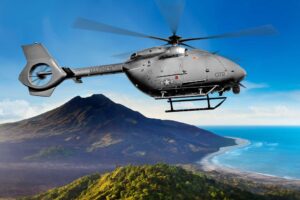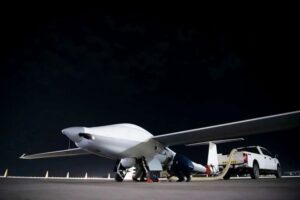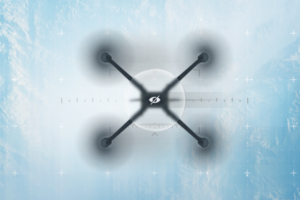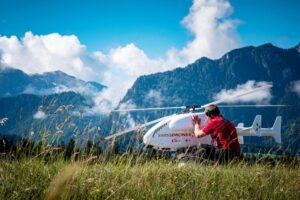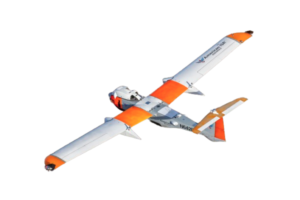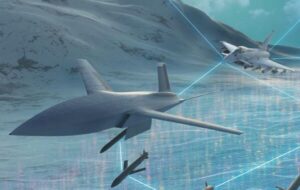The highly anticipated DJI Avata 2 has taken the drone world by storm, and with it comes the demand for its essential accessories, too. That’s led to a current snag for pilots seeking the official DJI Avata 2 ND filters; they’re out of stock at many retailers, including DJI’s own online shop.
The Avata 2 has certainly been popular. So much so that DJI has capped the number of Avata 2 drones you can buy at three units. DJI says it is cancelling additional units purchased beyond three. Sure, you can get around that by buying three from DJI, and then some from other retailers like Amazon and B&H. (And don’t overlook our favorite, little guy RC dealers to shop from, GetFPV.)
But no matter where you shop, Avata 2 ND filters seem to be sold out pretty much everywhere. That said, it might be a blessing in disguise. First off, some reviewers have found that — in some lighting circumstances — the filters give off a blue tinge. Secondly, the official DJI Avata 2 filters are expensive. The official DJI Avata 2 ND Filters Set costs $79.
Typically, The Drone Girl tends to avoid third-party products. They often end up just breaking more quickly, or they’re not quite off to snuff and have little issues. But actually when it comes to filters, that’s hardly the case.
Don’t panic just because Avata 2 filters are sold out pretty much everywhere
The best third-party companies that make ND filters
DJI has been an expert in making drones for more than a decade. It’s morphed into an expert in making cameras. But a couple other companies have long been experts in making lens filters. And I say, leave the job to the team with the greatest expertise.
That’s companies like PolarPro, which is based in Southern California and is primarily known for making filters both for DJI drones and GoPro action cameras. They manufacturer a few other action camera accessories and mounts, though their filters are among the most innovative of their kind. For example, PolarPro introduced the snap-on filter series in 2012.
PolarPro’s drone filters are custom-engineered with a lightweight aerospace aluminum frame to ensure easy installation. Quality is high, as PolarPro uses industry-leading CinemaSeries glass.
Freewell Gear also makes quality filters. The company launched just after PolarPro, again offering an alternative to major companies for niche photo equipment and accessories, like drone filters. Their stuff tends to be cheaper than PolarPro and in some ways a bit lesser quality. But they also tend to have more options in terms of kit sizes and configurations.
The best alternatives for DJI Avata 2 filters
And with that, these two companies offer what I consider the best alternatives to buying Avata 2 filters directly from DJI. These serve a range of configurations and budgets, giving you more options that might turn out to be higher-quality — yet more affordable — anyway.
Some of your best alternative options for the official DJI Avata 2 filters include:
Freewell ND Filters 4-Pack
For a budget-friendly option, Freewell offers a 4-pack of ND filters (ND8, ND16, ND32, ND64) for just $49.99. This kit provides a good range of light reduction for various shooting conditions.
Freewell filters tend to have a warmer tint that Polar Pro filters.
Freewell individual filters
Rather than forcing you to buy a 4-pack, Freewell gives users more options by offering each of the filters in the kit named above a la carte. Per filter, the value is not as good. Buying Freewell filters individually costs $19.99 each. That means you’d pay $80 to buy all four individually, when you can get them in the 4-pack for $50. If you’re going to buy three filters, opt for the 4-pack. But if you really only want one or two, you can save with the a la carte option.
PolarPro DJI Avata 2 Filter Kit (Pre-Order)
If you’re looking for a more comprehensive solution, PolarPro is offering a 5-filter kit (ND8, ND16, ND32, ND64, CPL) for pre-order at $70. This kit includes a circular polarizer filter alongside ND filters, giving you more control over glare and reflections. Annoyingly, it doesn’t ship until June 27, 2024.
If you purchase the PolarPro Avata 2 Filter Collection, you’ll have two options, the Vivid Collection, and the Shutter Collection. Both are somewhat similar in that they both use Germany-made CinemaSeries glass.
The big difference? The Vivid Collection combines two filter effects (ND + Polarization) into a single glass element. Use it to reduce shutter speeds and cut glare especially in bright and reflective conditions. It’s best for drone pilots seeking an ultra-saturated color aesthetic. No polarization calibration needed.
The Shutter Collection is more versatile, allowing you to reduce shutter speeds to cinematic levels in all sorts of light conditions.
Avata 2 filters: should you wait, or buy third-party filters now?
Drone pilots, especially those aiming for professional or artistic results, rely on filters for two key reasons. Firstly, bright outdoor conditions can overexpose the camera sensor, washing out colors and details. ND filters act like sunglasses for the camera, reducing the amount of light entering and preventing this “blown-out” look.
Secondly, ND filters allow for slower shutter speeds, which creates a desirable motion blur effect in videos, mimicking the cinematic feel of slow-motion footage. Sometimes fast shutter speeds just look way too jittery. Especially on a fast-flying drone like the Avata 2, that jittery-ness can compound.
For the best footage, you’ll likely want some sort of filter on your Avata 2’s camera sooner rather than later. And if you haven’t been convinced yet, check out my deeper dive into how ND filters can improve your drone photography.
And while I’ve named just a couple of reputable alternatives, several other brands offer compatible ND and PL filters for the Avata 2. When choosing replacements from companies above the two I’ve named, ensure they are specifically designed for the Avata 2 to avoid compatibility issues and guarantee a snug fit.
So, while the official DJI filters might be on temporary hold, these alternatives from Freewell and PolarPro ensure your Avata 2 footage maintains that crisp, cinematic quality. Happy flying!
The post DJI Avata 2 filters out of stock, but these alternatives might be better anyway appeared first on The Drone Girl.





